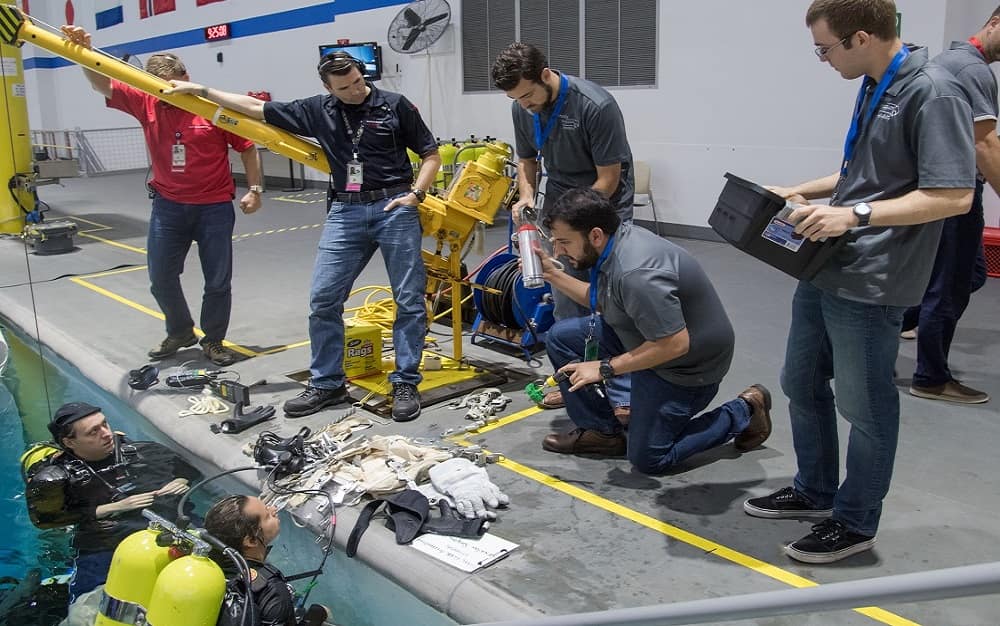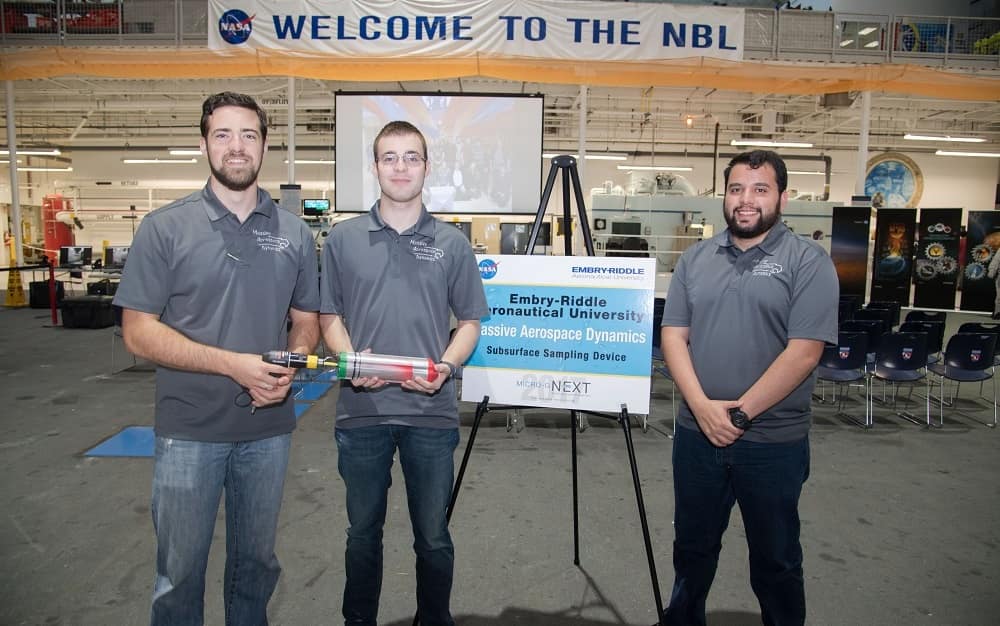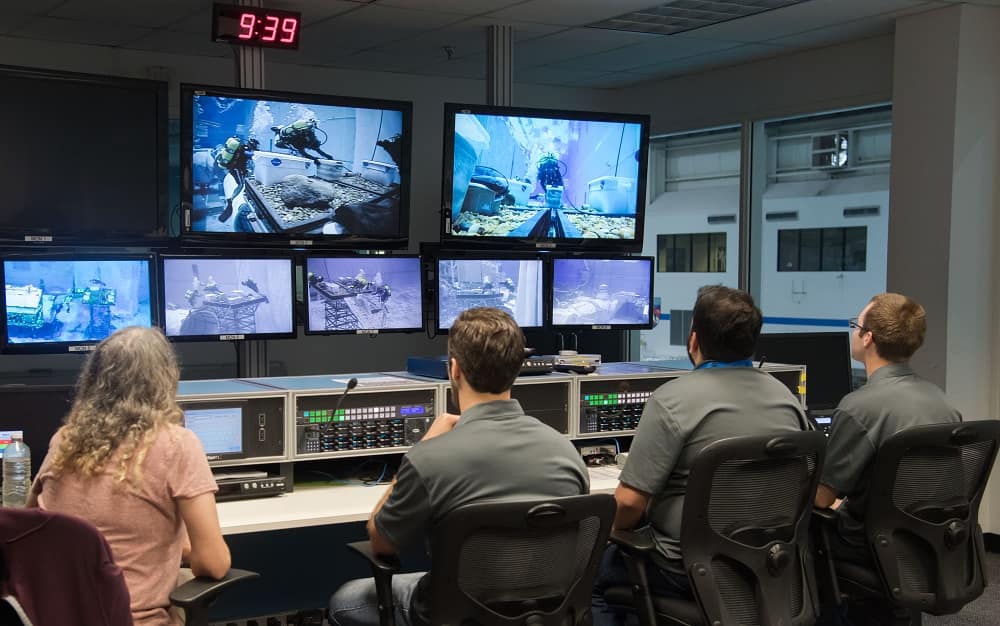Prescott Students Build Micro-Gravity Device for NASA's Micro-g NExT Challenge
The devices were built to aid in one of three specific microgravity scenarios: collecting surface samples, collecting subsurface samples, and anchoring. Embry-Riddle's Massive Aerospace Dynamics (MAD) team included students Farjam Ashrafzadeh, William Hosea, and Daniel Griffith—accompanied by faculty advisor Professor Richard Mangum—who travelled to Houston, Tex. to put their prototype to the test in NASA's Neutral Buoyancy Laboratory—an under-water, micro-gravity simulated environment.
"The teams participating in the challenge present their concept to high ranking NASA officials and safety directors," said Ashrafzadeh. "Then, the teams present the tool to safety divers (who work alongside astronauts in training for space walks) who test the device."
Members of the MAD team were determined to challenge themselves by avoiding current methods of obtaining subsurface samples in their design. The result was their Extra-Terrestrial Subsurface Sampling Device (ETSSD), funded primarily through the Undergraduate Research Institute (URI).
"The team wanted to build a device that would be entirely original," said Ashrafzadeh, "MAD did not want to simply reinvent the wheel. The solution we came up with was to create this bullet-like device that can penetrate the deposit and funnel the material around itself to obtain the sample."
"We began with the capturing mechanism," explained Hosea, who is majoring in Space Physics and was instrumental to designing a drill that could work under the micro-gravity testing conditions. "We designed everything off of that. The width of the drill, drill bit, and drill shaft itself were all dependent on the iris—the capturing mechanism we decided to use."
During the NASA exercise, once the diver reached the desired drilling depth, the MAD team instructed them to insert the custom 3D printed torsion key, which closed a specially designed iris mechanism housed within the device's cylinder, thus capturing the subsurface material for extraction. The team was given three opportunities to demonstrate their design, and achieved one successful capture.
"The feeling is hard to describe," said Hosea. "It was overwhelming. I was excited, happy, relieved, and stressed all at the same time. Seeing nine months of hard work and dedication finally starting to pay off—it was something else."
ERAU's MAD team was invited to participate due to ERAU's past involvement in the event. Their contribution this year likewise will leave the opportunity open for future participation, either as a team, or as peer-mentors for upcoming teams.
"As far as our current design, it has the potential to be built into a more elaborate model," said Ashrafzadeh, "But we are thinking about waiting until next year's challenge—mostly due to the challenge settings. For example, this year was the first year that the subsurface sampling challenge was open."
"I genuinely appreciated the opportunity to be involved," Ashrafzadeh added. "It made us feel like we contributed a small amount to space exploration by providing our ideas of a possible tool that could be used in the future."
Massive Aerospace Dynamics from Embry-Riddle Prescott on Vimeo.




 Keaton S. Ziem
Keaton S. Ziem